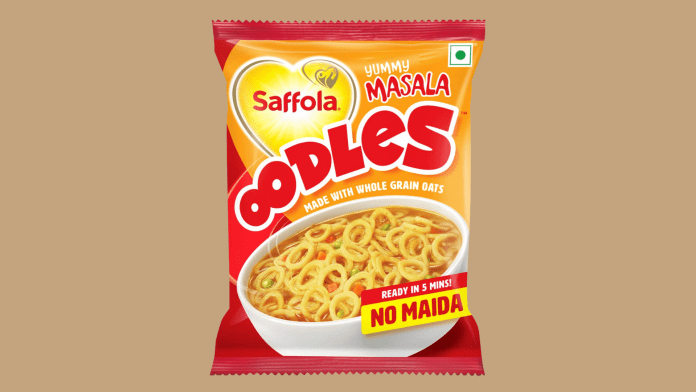The Indian food industry is growing rapidly, and exports are becoming increasingly important for Indian food businesses. With the increasing demand for Indian cuisine around the world, exporting food products can provide growth opportunities and help businesses diversify their customer base.
Identifying the right time for exports can be a critical decision for businesses looking to expand their reach and increase revenue. Entering new markets can present numerous growth opportunities, but it also comes with various risks and challenges that must be carefully considered. In this article, we’ll explore some key factors to help businesses determine the right time for exports.
1. Market research:
Before considering exports, businesses should conduct thorough market research to identify potential opportunities and challenges. This includes analysing market size, growth potential, competitive landscape, consumer behaviour, and regulatory requirements. By understanding the market dynamics, businesses can identify whether there is sufficient demand for their products or services and whether they can compete effectively in the new market.
2. Financial readiness:
Exporting can require a significant investment of time, money, and resources. Businesses should assess their financial readiness by conducting a cost-benefit analysis and creating a detailed budget. This includes evaluating the cost of production, shipping, marketing, and distribution, as well as any regulatory or legal expenses. Businesses should also consider the potential return on investment (ROI) and set realistic revenue targets for the new market.
3. Logistics and infrastructure:
Exporting requires efficient logistics and infrastructure to ensure that products can be delivered to customers in a timely and cost-effective manner. Businesses should evaluate their existing supply chain and logistics capabilities, and identify any gaps or weaknesses that need to be addressed. This includes assessing transportation, warehousing, and distribution capabilities, as well as customs and regulatory requirements.
4. Legal and regulatory considerations:
Exporting also involves complying with a range of legal and regulatory requirements, both domestically and in the target market. Businesses should evaluate the legal and regulatory framework in the new market, and ensure that they comply with all relevant laws and regulations. This includes obtaining necessary licenses and permits, complying with import/export regulations, and complying with local tax laws.
5. Market entry strategy:
Once businesses have evaluated the market opportunity and assessed their readiness for exports, they need to determine the most effective market entry strategy. This includes evaluating the best channels of distribution, developing a pricing strategy, and creating a marketing and promotional plan. Businesses should also consider the cultural and linguistic differences in the new market, and adapt their messaging and communication to effectively reach the target audience.
6. Timing is key:
Ultimately, the timing for exports will depend on a range of factors, including market opportunity, financial readiness, logistics and infrastructure, legal and regulatory considerations, and market entry strategy. Businesses should carefully evaluate each of these factors and make an informed decision about when the time is right to enter a new market. With careful planning and preparation, businesses can successfully expand their reach and achieve sustainable growth through exports.
Export opportunities for food businesses can be a great way to expand your customer base, increase revenue, and grow your brand internationally. With the global food market estimated to reach $10 trillion by 2025, the opportunities for food businesses to enter new markets are vast.
We’ll explore some key export opportunities for food businesses and how to leverage them to expand your food business at a fast and optimized pace.
1. Growing demand for natural, organic and healthy food:
One of the most significant export opportunities for food businesses is the growing demand for natural, organic, and healthy foods. With consumers increasingly concerned about health and wellness, there is an increasing demand for foods that are free from artificial ingredients, preservatives, and additives. This presents a significant opportunity for businesses that can offer high-quality, natural and healthy food products.
2. Rising demand for plant-based foods:
Another significant export opportunity is the rising demand for plant-based foods. As more consumers adopt vegetarian and vegan lifestyles, there is a growing demand for plant-based protein sources and meat alternatives. This presents an opportunity for businesses that can offer innovative, high-quality plant-based products.
3. Emerging markets:
Emerging markets offer significant export opportunities for food businesses. These markets have a growing middle class and an increasing appetite for high-quality, international food products. Some of the most promising emerging markets for food businesses include China, India, Brazil, and Southeast Asia.
4. Speciality foods:
Speciality foods, such as artisanal cheeses, chocolates, and spices, offer significant export opportunities for food businesses. These products have a unique and distinctive flavour profile that appeals to discerning consumers who are willing to pay a premium for quality. Speciality foods also offer an opportunity for businesses to differentiate themselves from competitors and build a strong brand.
5. Private-label products:
Private-label products offer an excellent opportunity for food businesses to enter new markets. Private label products are manufactured by a third-party company but sold under a retailer’s brand. This allows businesses to take advantage of established distribution channels and leverage the retailer’s brand to reach new customers.
To take advantage of export opportunities, food businesses need to develop a comprehensive export strategy. This includes identifying the most promising markets, conducting market research, and assessing regulatory and legal requirements. Businesses should also consider logistics and transportation, including shipping and handling, as well as packaging and labelling requirements.
Developing strong partnerships with distributors and retailers is also critical to success in international markets. Businesses should carefully evaluate potential partners and ensure that they have the resources and expertise to effectively market and distribute their products.
Export opportunities present a significant opportunity for food businesses to expand their customer base, increase revenue and take advantage of the global demand for high-quality food products. With careful planning and execution, food businesses can successfully enter new markets and achieve sustainable growth.










